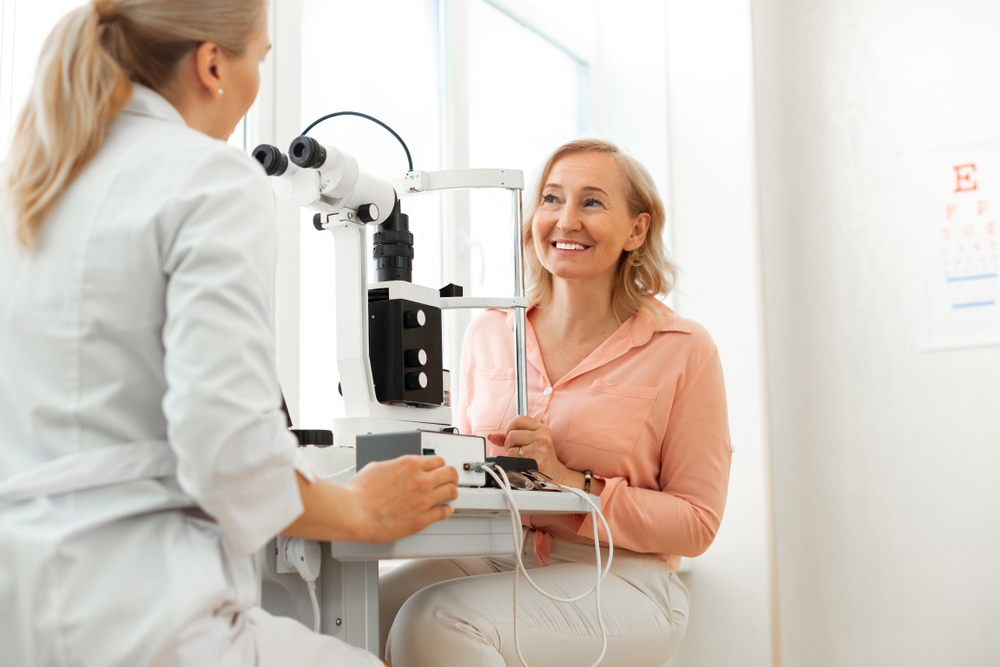What Are the Risk Factors for Developing Glaucoma?
Glaucoma is the second leading cause of blindness in the United States. What makes this condition particularly challenging is that most people with glaucoma experience no symptoms until significant vision loss has already occurred.
Learning about your personal risk factors for developing glaucoma is essential for early detection and prevention of irreversible vision damage.
Who is at Risk for Glaucoma?
Glaucoma is an eye condition often characterized by high intraocular pressure, which can lead to damage to the optic nerve and result in partial or total blindness. While anyone can have this condition, certain groups are more likely to develop glaucoma based on these risk factors:
Age
Although glaucoma can occur at any age, the risk increases substantially after age 40. This age-related increase occurs because the eye’s drainage system naturally becomes less efficient over time, potentially leading to elevated eye pressure and optic nerve damage.
The American Academy of Ophthalmology recommends comprehensive eye exams every one to two years for adults over 40, with more frequent monitoring for those with additional risk factors.
Family History
Having a family member with glaucoma increases your risk of developing the condition by four to nine times compared to the general population. If you have a parent, sibling, or grandparent with glaucoma, it’s important to inform your eye care provider during your examination.
This family history may warrant earlier or more frequent screening to catch any signs of glaucoma before vision loss occurs.
Ethnicity
Certain ethnic groups face significantly elevated glaucoma risks. African Americans are six to eight times more likely to develop glaucoma than Caucasians and tend to develop the condition at younger ages with more aggressive progression.
Hispanic individuals, particularly those of Mexican descent, also face increased risk, especially after age 60. People of Asian heritage have a higher predisposition to angle-closure glaucoma, a type that can cause sudden, severe symptoms and requires immediate medical attention.
Refractive Errors
Both nearsightedness and farsightedness can influence glaucoma risk through different mechanisms. Severe nearsightedness is associated with increased risk of open-angle glaucoma, while farsightedness can predispose individuals to angle-closure glaucoma due to the eye’s structural characteristics.
Corneal Thickness
The thickness of your cornea affects the accuracy of eye pressure measurements and may independently influence your risk of developing glaucoma. Thinner corneas are associated with a higher risk of glaucoma, possibly because they provide less structural support to the optic nerve or because they lead to an underestimation of actual eye pressure.
During your comprehensive eye exam at Mid Ohio Eye, your eye doctor will measure corneal thickness using a technique called pachymetry to assess your individual risk profile better.
Health Conditions
Several medical conditions can increase your glaucoma risk. Diabetes affects blood flow to the optic nerve and can contribute to glaucoma development. High blood pressure, migraines, and poor blood circulation can similarly impact the delicate blood vessels that nourish the optic nerve.
Long-Term Steroid Use
Prolonged use of corticosteroid medications can increase eye pressure and lead to steroid-induced glaucoma. If you require long-term steroid treatment for conditions like asthma or autoimmune disorders, regular eye pressure monitoring becomes particularly important.
Eye Injuries
Past eye injuries can disrupt the eye’s drainage system and increase glaucoma risk years later. Blunt trauma, chemical burns, or penetrating injuries can cause scarring or structural changes that impede proper fluid drainage from the eye.
The Importance of Glaucoma Risk Assessment
Understanding your personal risk profile allows your eye care team to develop an appropriate monitoring schedule. High-risk individuals may need examinations every six months, while those at lower risk might be monitored annually or every two years.
Since glaucoma typically has no early symptoms, regular comprehensive eye examinations remain the most effective way to detect the condition before vision loss occurs. These exams should include:
- Intraocular pressure measurement
- Optic nerve evaluation
- Visual field testing
- Drainage angle assessment
- Corneal thickness measurement
When glaucoma is detected early, treatment can effectively slow or halt its progression. At Mid Ohio Eye, Dr. San Filippo offers advanced treatment options, including Minimally Invasive Glaucoma Surgery (MIGS) procedures, such as the iStent Trabecular Micro-Bypass, which can be performed in conjunction with cataract surgery for eligible patients.
Don’t wait for symptoms to develop. Schedule your comprehensive eye examination at Mid Ohio Eye in Columbus, OH, today to assess your glaucoma risk and protect your vision.










